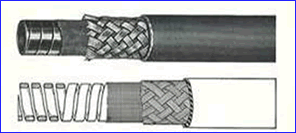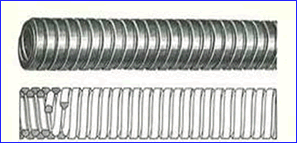Flexible Shaft Casings
What is Casing?
A Casing is a tube or conduit the flexible shaft rotates within. It is part of the overall flexible shaft assembly and has its own end fittings, called ferrules, which attach the casing to the stationary mounting points at either end of the drive system.

What Purpose does a Casing Serve?
A Flexible Shaft casing serves many purposes that are all essential to the accurate operation of practically every type of Flexible Shaft. For example, the casings
-
Protect the shaft from moisture, dust and dirt while retaining lubrication
-
Provide a continuous guide for the enclosed shaft for smooth operation
-
Prevent injury to the operator by contact with an unprotected rotating shaft at high speed
-
Prevent the shaft from helixing, or looping, during operation under torsional loads
-
Control the bending of the enclosed shaft by guiding it into more natural and gradual bends while limiting how tight a bend radius it can achieve
When should Casing be used?
Casing is very application specific. We recommend using casing for any of the “purposes” listed above. We suggest casing for all shaft lengths which exceed a certain length as per the table below.
What types of Casing are available?
Casing comes in a wide variety of options, depending on application and cost considerations. A casing can be as simple as an extruded flexible plastic tube or as complicated as a multi-layer extrusion with wire braiding and machined ferrules with gaskets. Some casings are hard metal tubes bent into fixed geometries with braised ferrules on each end.
S.S. White manufactures two standard types of casings.
Metallic Casings
Plastic or Rubber Covered Casings
-
Metallic Casings are durable and very flexible.
-
They provide strong support for the entire length of the Flexible Shaft
-
This type of casing has a flexible metal liner with reinforced layers of plastic or rubber extruded on the outer surface.
-
This casing will provide resistance to oil and moisture as well as abrasion.






